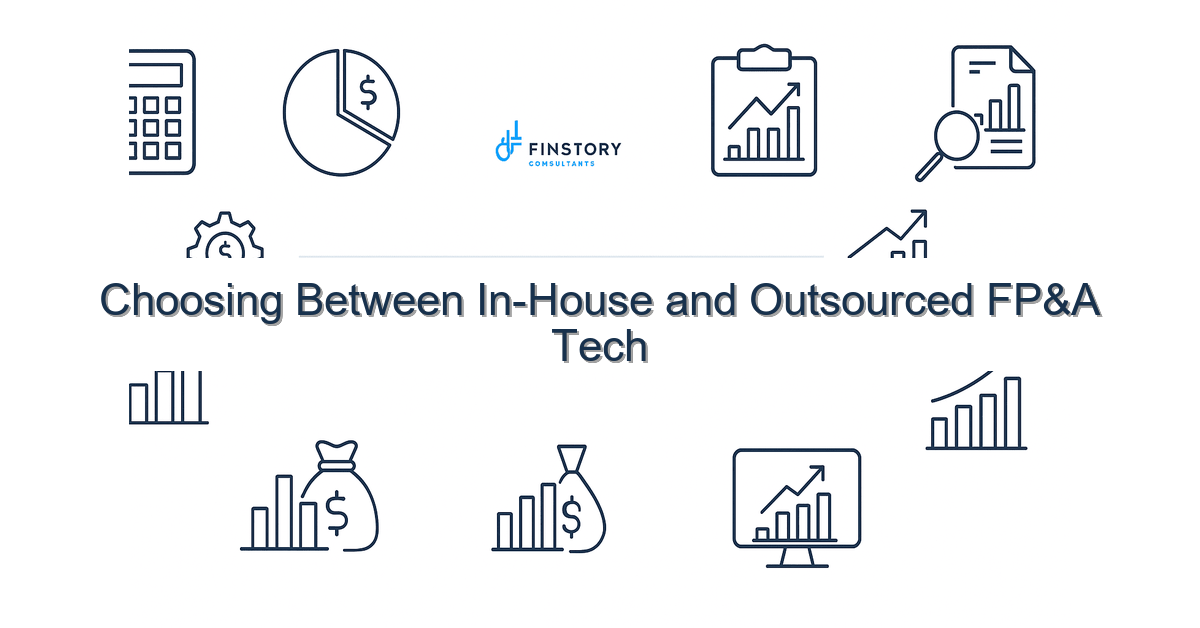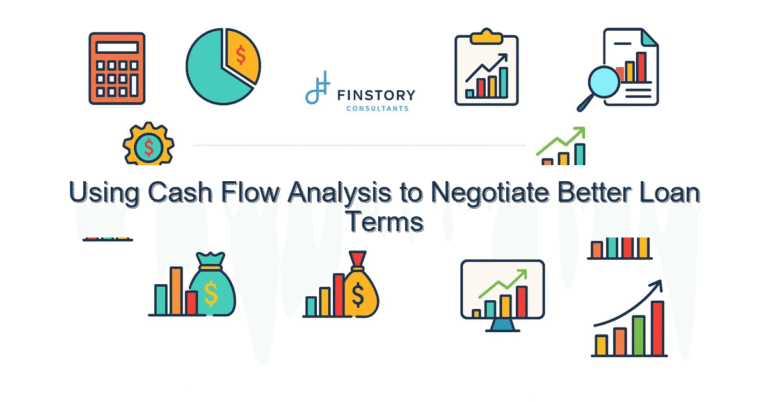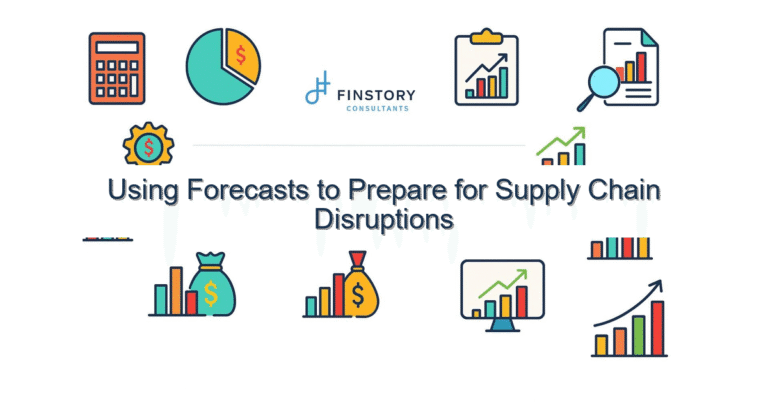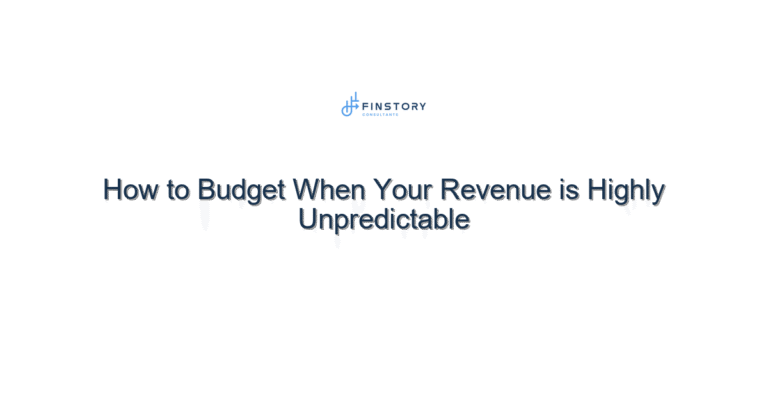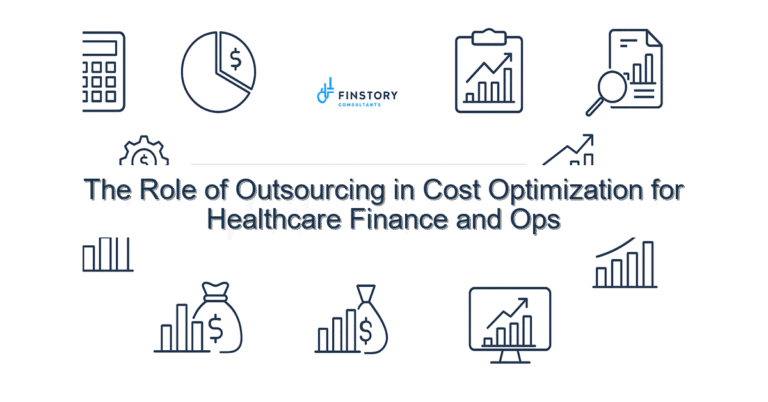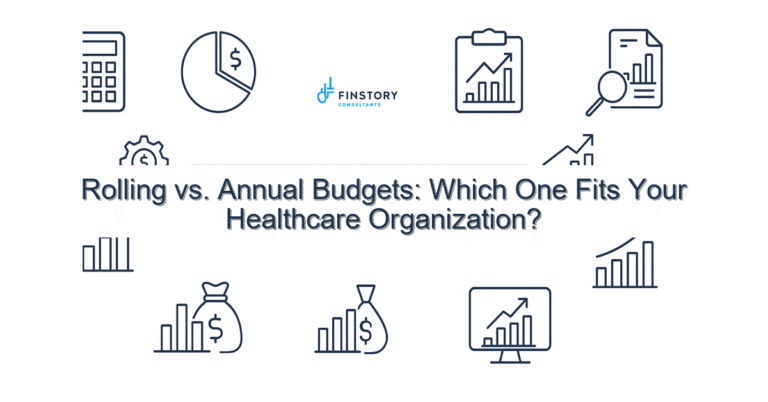Choosing Between In-House and Outsourced FP&A Tech
You’re juggling staffing shortages, rising costs, and leadership requests for faster, clearer insight. Deciding whether to build in-house FP&A tech or buy outsourced FP&A technology shouldn’t feel like guessing under pressure.
Summary: Choose the approach that matches your team’s capacity, timeline, and risk tolerance: in-house FP&A software offers control and customization; outsourced FP&A technology speeds time-to-value and adds specialist support. The real win is a clear decision framework, quick wins that reduce month-end cycle time, and dashboards leaders actually use.
What’s the real problem? (FP&A tech)
Healthcare finance teams must deliver accurate forecasts, understand clinical and operational drivers, and report to executives and boards—often with legacy systems and limited staff. That gap between expectation and capability is what drives the in-house vs outsourced FP&A tech decision.
- Slow month-end close and forecasting that takes weeks instead of days.
- Manual spreadsheets that hide assumptions and create one version of the truth problems.
- Leadership requests for scenario analysis (what if volumes drop 10%?) that never make it to the dashboard.
- Security and compliance concerns around patient-related costs and financial controls.
What leaders get wrong (FP&A tech)
Leaders often treat the decision as binary—build because you worry about IP, or buy because someone promised a 90-day turnkey product. Both views miss the middle ground: integration, change management, and ongoing governance drive success more than the vendor label.
Common missteps:
- Overestimating internal capacity. IT and finance are stretched; projects quietly stall.
- Choosing tech without process redesign. You automate broken processes and compound the problem.
- Ignoring total cost of ownership. Licensing cost is the headline; integration, training, and data hygiene are the real spend.
A better approach (FP&A tech)
Think of the decision as aligning four things: capability, speed, cost, and risk. Use this 4-step framework to choose a path that fits your operating reality.
- Assess capability gaps: map current processes (forecasting, variance analysis, driver-based models) and rank them by business impact.
- Define time-to-value: what needs to be fixed in 30 days, 90 days, 12 months? Prioritize quick wins for leadership reporting and month-end relief.
- Estimate true cost and resource needs: vendor fees, integration work, internal FTE time, and ongoing support.
- Decide hybrid options: in-house core models + outsourced automation and dashboarding, or outsourced core with internal analytics for clinical linking.
Real-world example: A mid-sized community health system chose an outsourced FP&A technology partner to stand up driver-based forecasting and Power BI leadership reporting in 10 weeks. They kept a small in-house team to maintain clinical cost drivers. Result: forecast variance dropped 40% and executive planning time fell from three days to one.
Quick implementation checklist
- Create a one-page process map of your current forecasting and reporting flow.
- List top 5 KPIs leadership trusts today—and one they wish they had.
- Run a 30-day pilot: automate one report (e.g., month-to-date margin by service line) using a vendor or a lightweight in-house script.
- Identify 2 data sources with the highest error rates and assign owners to clean them.
- Decide on governance: who approves model changes and who owns documentation?
- Request vendor references from healthcare clients and ask for a 90-day roadmap.
- Estimate internal FTE hours per month required to support the chosen solution.
- Schedule a 1-hour executive demo—focus on decisions enabled, not features.
What success looks like
Measure outcomes, not vendor slideware. Here are specific targets you can aim for:
- Forecast accuracy improvement: +20–40% reduction in forecast variance within 6 months.
- Close and report cycle time: reduce from days to <48 hours for core dashboards.
- User adoption: 80% of executives use new leadership reporting monthly.
- ROI: payback on implementation costs within 9–18 months via avoided FTEs and better margin management.
- Control: documented model governance and versioning for 100% of planning models.
Risks & how to manage them
Top risks and practical mitigations:
- Risk: Project stalls due to competing IT priorities. Mitigation: Secure a focused project sponsor and commit a small cross-functional core team for 8–12 weeks.
- Risk: Data quality undermines trust. Mitigation: Run a parallel reconciliation process for 2 cycles, and publish a data-quality dashboard.
- Risk: Vendor lock-in or unmet promises. Mitigation: Include exit clauses, data export requirements, and a phased contract tied to milestones.
Tools & data
Your tech stack should support finance automation, strong integration, and readable leadership reporting. Common elements that work well in healthcare:
- ETL/data orchestration to pull from ERP, EHR, and payroll systems (reduce manual exports).
- Driver-based planning models that link clinical volumes to cost and revenue.
- Power BI (or Tableau) for leadership reporting and interactive scenario analysis.
- Robust version control and documentation for models and assumptions.
- Automation tools for recurring consolidations and variance reports.
Tip: A hybrid model—internal subject-matter experts with outsourced FP&A technology—often combines speed with clinical context.
FAQs
Q: How long does an outsourced FP&A technology implementation take?
A: Typical implementations for core reporting and driver-based forecasting are 8–12 weeks for a focused pilot; enterprise-wide rollouts take longer depending on integrations.
Q: Can we keep sensitive data on-premise if we choose an outsourced partner?
A: Yes. Many vendors support hybrid deployments or secure cloud configurations and will sign BAAs and standard healthcare data protections.
Q: When should we build in-house?
A: Consider building if you have a stable, experienced finance engineering team, unique IP tied to care models, and a multi-year timeline and budget to support ongoing development.
Q: What’s a quick win to prove FP&A tech value?
A: Automate one high-visibility report (e.g., margin by service line) and present the first live dashboard to executives within 30–60 days.
Next steps
If the decision feels urgent, start with a 30–60 day pilot that demonstrates value and clarifies long-term needs. Use the checklist above, pull together a two-person executive steering group, and pick a partner or internal lead that can commit to weekly progress reviews.
Ready to explore outsourced FP&A technology for healthcare or compare in-house FP&A software vs outsourced solutions? Contact Finstory for a candid assessment and an implementation roadmap that matches your timeline and risk tolerance. We’ll show realistic timelines, costs, and the KPIs you can expect to move.
Work with Finstory. If you want this done right—tailored to your operations—we’ll map the process, stand up the dashboards, and train your team. Let’s talk about your goals.
Related reading: Driver-Based Forecasting in Healthcare, Finstory FP&A Implementation Services, and Finance Automation for Healthcare Teams.
📞 Ready to take the next step?
Book a 20-min call with our experts and see how we can help your team move faster.
Prefer email or phone? Write to info@finstory.net
or call +91 44-45811170.
